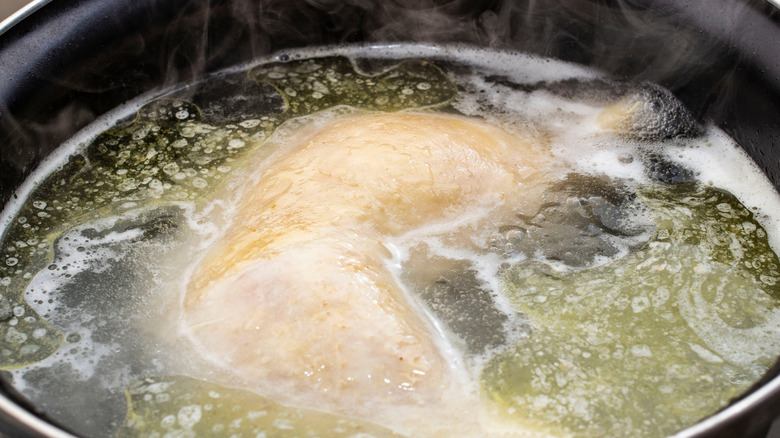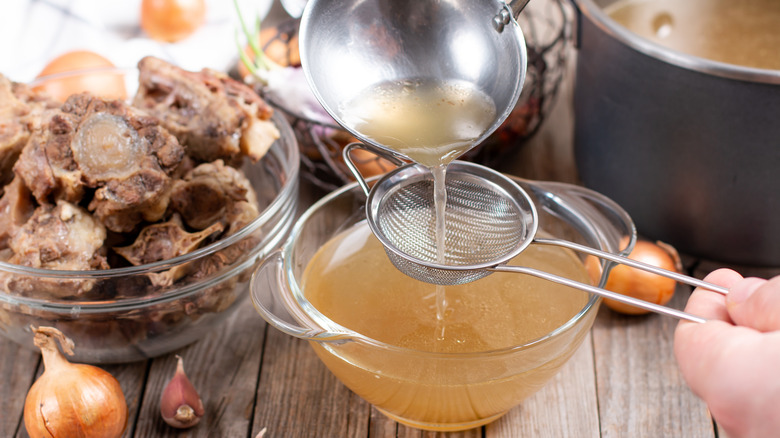Why There Is Foam On Top Of Your Chicken Stock
It would take living under a rock to have not noticed that one of the biggest food trends of the last decade is the growing interest in bone broths. Despite it's popularity, very little research has been conducted to prove whether bone broth is actually the nutritious super fuel it's claimed to be (via Healthline). However, there may be something to it, as humanity has long taken to consuming stock as a healthy, nutrient-dense rejuvenator. It took the rise of the Paleo diet for Americans to catch on and realize the potential health benefits of stewing animal bones and vegetables together (via the Michelin Guide).
With the increased interest in bone broth came a renewed interest in making stock at home. Bon Appétit says that taking the time to make your own broth is going to yield a far better result than using processed stock from a box or can. And if you have made your own chicken stock, you no doubt encountered a layer of foam forming atop the simmering stock. Seeing this could lead to you to worry that something has gone seriously wrong with the stock, but there's no need, as the foam neither helps nor hurts the final product. It is simply a result of the chemical reactions happening inside the stock pot.
Cause and solution for soup scum
However, the foam that appears atop your chicken stock is quite unsightly and worth getting rid of if it puts you off. Referred to as soup scum, this effervescence appears when you're making a meat-based broth, according to Bon Appétit, because of "rogue proteins that coagulate when heated," which have been leached out of meat, bones, and proteinaceous vegetables. Once the proteins are free, they become viscous and form bubbles, creating the foul-looking foam. This tends to happen when the broth is brought to a fast boil, as the higher temperatures will make the proteins coagulate more quickly.
While the soup scum is not harmful to ingest (though you'll often hear them referred to as impurities), it's customary to remove it so that your broth doesn't turn an unappealing, grayish color. The best time to do so, according to Umami Days, is when the broth reaches boiling point. Using a slotted spoon or fine mesh strainer, remove any suds forming on the broth until the liquid is clear and no more foam is forming. This can take anywhere from 10 to 20 minutes, depending on how much protein is escaping. It also pays to strain the broth through two layers of cheesecloth once it's finished cooking to catch any residual matter. Your end result should be a beautiful, clear, and flavorful broth.

